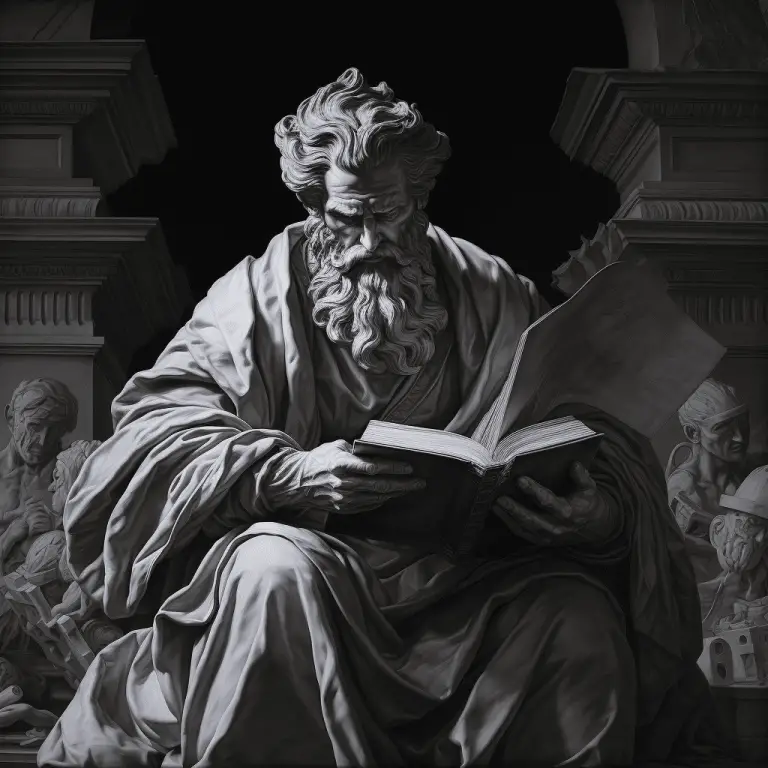What is Dualism Plato? Dualism, as proposed by Plato, is a philosophical concept that suggests the existence of two distinct and immaterial substances: the mind or soul, and the physical body. According to this theory, mental events and phenomena are separate from physical events in the world.
What Is Dualism Plato?
In Plato’s philosophy, dualism refers to the belief that there are two distinct and immaterial substances: the mind or soul, and the physical body. This concept is central to understanding Plato’s views on the nature of reality and the relationship between the physical and mental realms.
Plato argued that while the physical world we perceive through our senses is constantly changing, there exists a realm of eternal and unchanging forms or ideas. According to Plato, these forms represent ultimate reality, whereas the physical world is merely a reflection or imperfect copy of these ideal forms.
For Plato, dualism extended beyond just a distinction between physical objects and abstract concepts. He also applied it to the realm of human beings, asserting that each individual has a material body housing an immortal soul. The soul, according to Plato, possesses mental properties and experiences mental events separate from those associated with the physical body.
This separation between mind and body gave rise to what is known as substance dualism – the view that mental phenomena cannot be reduced to purely physical explanations. While physical sciences describe the laws governing physical events and properties, they fail to capture the subjective qualities of consciousness.
Plato believed in a causal interaction between mind and body. However, he proposed a theory called “pre-established harmony,” suggesting that mental properties emerge from within an immaterial substance rather than directly influencing or being influenced by physical events.
The mind-body problem posed by Plato’s dualism continues to challenge philosophers today. It raises questions about how mental properties can arise from purely physical processes and how they relate to our everyday experiences as conscious beings.
While some philosophers have embraced alternative theories like property dualism (which posits that mental properties are irreducible but dependent on specific arrangements of physical states), others reject dualism altogether in favor of monistic views that seek to explain mental phenomena solely in terms of neural processes within the brain.
Plato’s Theory of Forms and Dualistic Thought
Plato, one of the most influential philosophers in history, developed a theory known as dualism. This theory explores the relationship between the physical world and the realm of abstract ideas or forms. As I delve into Plato’s theory of forms and dualistic thought, let me shed some light on this complex concept.
1. Understanding Dualism
Dualism, in Plato’s perspective, suggests that there are two distinct and immaterial substances: the physical body and the mind or soul. According to this view, human beings consist of both a material body and an immaterial substance that houses mental phenomena.
At the core of Plato’s dualism lies his belief in the existence of forms or ideas that transcend our physical reality. These forms represent perfect and unchanging concepts such as beauty, justice, truth, and goodness. In contrast, objects in the physical world are mere imperfect copies or reflections of these ideal forms.
3. Causal Interaction
Plato proposed a complex interplay between these two realms – the world of forms and our physical reality. While he acknowledged their ontological distinction, he believed in a causal interaction between them. This means that mental properties can emerge from physical events while also influencing them.
4. Mind-Body Problem
Plato’s theory addresses what is commonly referred to as the mind-body problem. It attempts to explain how mental events relate to physical events within human beings. According to him, mental phenomena cannot be reduced solely to physical descriptions or explanations; they possess a certain subjective quality that goes beyond purely physical characteristics.
5. Substance Dualism vs Property Dualism
It is important to note that Plato’s dualism aligns more closely with substance dualism rather than property dualism. Substance dualists posit that mind and human body are separate entities with distinct natures but interact causally with each other. Property dualists, on the other hand, argue that mental properties emerge from physical states without positing separate substances.
While Plato’s dualism has undeniably sparked intense debates within the philosophical community, it remains a complex and challenging theory to fully comprehend. The mind-body problem, causal interaction, unity concerns, and empirical validation continue to be critical areas of discussion in understanding the nature of physical and mental events.
What Is Dualism Plato – Conclusion
In conclusion, Plato’s dualism offers an intriguing perspective on the mind-body problem by highlighting the existence of separate and immaterial substances underlying our experiences. It proposes that there are two distinct and immaterial substances: the physical body and the mind or soul.
While it presents challenges in terms of explaining how these non-physical elements interact with our material bodies, it encourages us to explore alternative frameworks beyond traditional views offered by purely physical sciences. By delving deeper into the complexities of this theory, we gain a deeper appreciation for the rich tapestry of human existence and the intricacies of our mental and physical lives.

